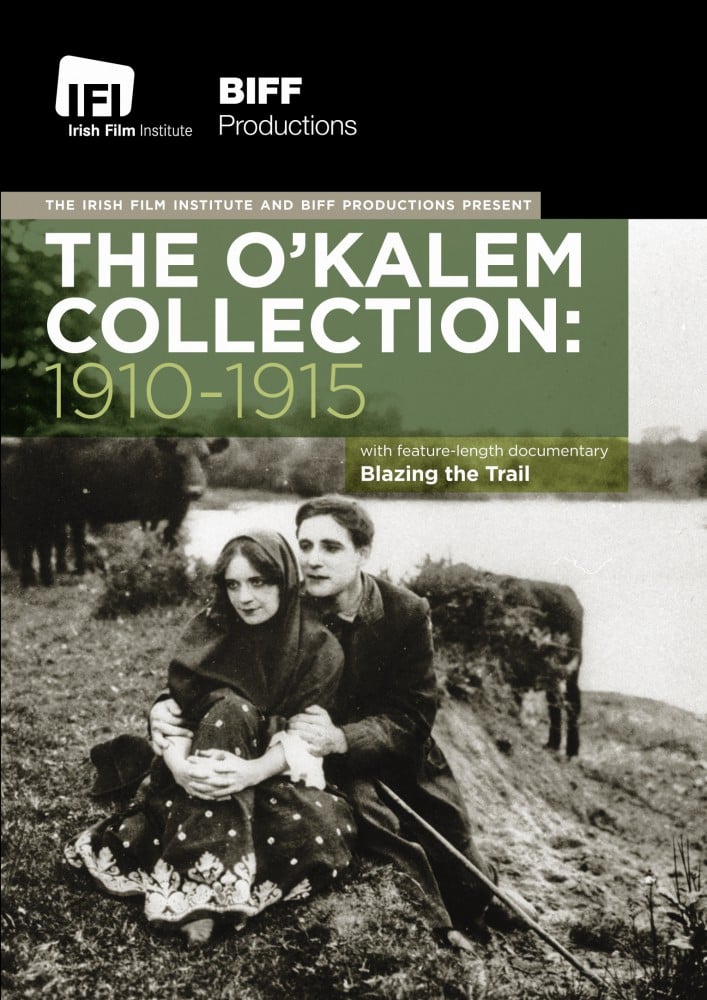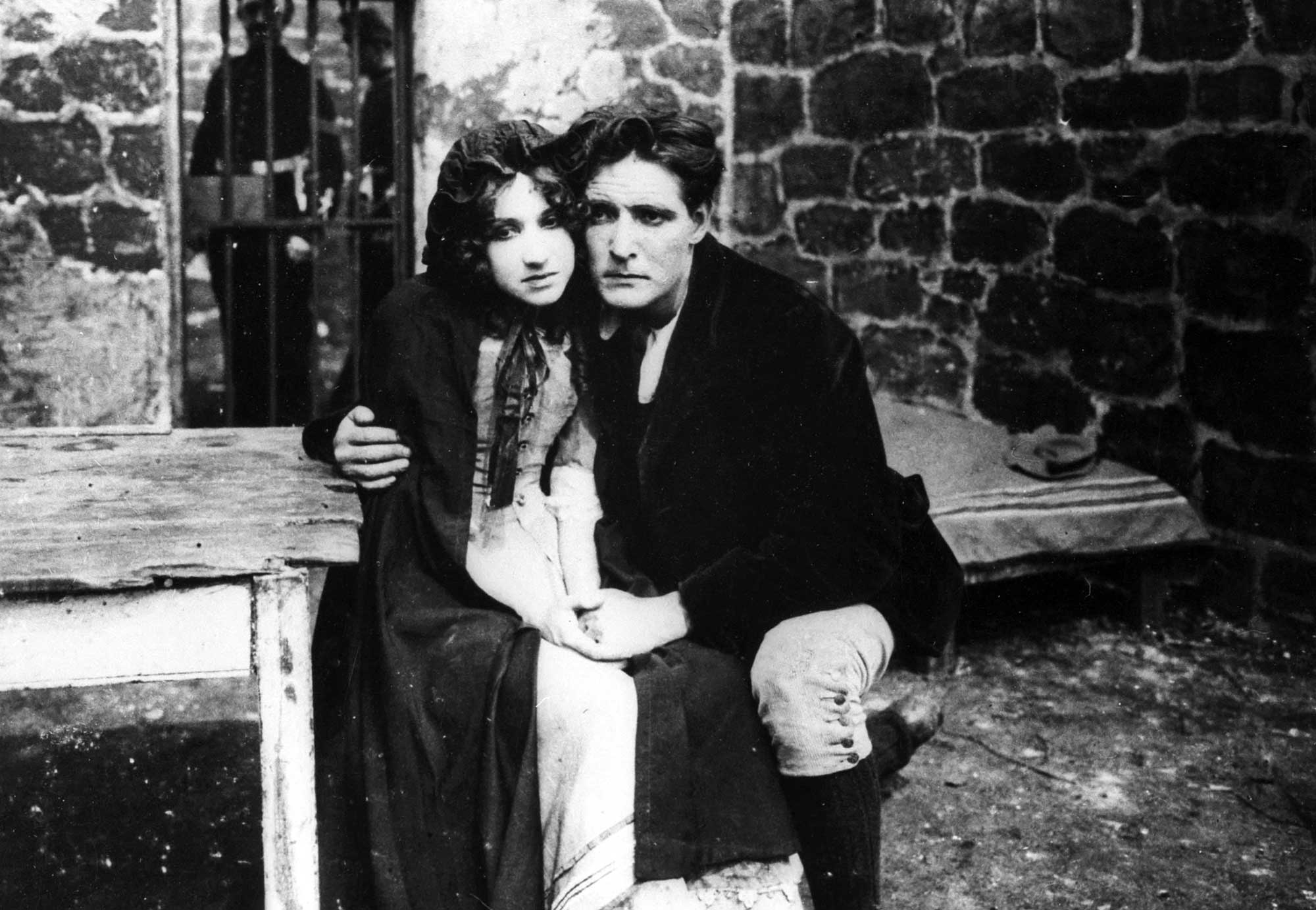For Ireland’s Sake
New York company releases new film shot in Killarney
On 12 January 1914, a new film ‘For Ireland’s Sake’ was released in the United States. The film was produced by the O’Kalem Film Company of New York - known affectionately as the O'Kalems - which produced almost thirty films dealing with Ireland and Irish subjects between 1910 and 1915. The members of the Company, primarily Gene Gauntier and Sidney Olcott, made history by producing not only the earliest series of fiction films made in Ireland, but also the first films to be shot on both sides of the Atlantic. The majority of these were filmed in and around Killarney Co. Kerry, making extensive use of the dramatic landscape and using locals as extras.The film is reproduced here courtesy of the IFI Irish Film Archive.
For Ireland’s Sake (1914) (Gene Gauntier
Feature Players)
Director: Sidney Olcott / Scenario: Gene Gauntier
About For Ireland's Sake
The O’Kalems, writes Tony Tracy of NUI Galway, was an effective PR label created by New York based Kalem Film Company to advertise their success and specialisation with irish subjects following a visit to Ireland in the summer of 1910 during which they shot The Lad from Ireland.
...They returned for a fourth time to Killarney in 1913 but under
new management. After her resignation – along
with Olcott - from Kalem in 1912, Gene Gauntier capitalised on her
fame as an actress to form her own production company – the
Gene Gauntier Feature Players. The ‘GG’ logo can be
seen on the intertitles of this film. The film repeats and builds
on several elements of The Colleen Bawn, most notably its dramatic
use of well-known landmarks such as Muckross Abbey and the Gap of
Dunloe and its insistence on the authenticity of these locations
for the viewer. The framing device of a cave (where Marty hides)
from the earlier film is once again effectively deployed. The film
is however a considerable improvement on the Boucicault adaptation
in every respect. It is also a reworking of the revolutionary
theme from Rory O’More centering on conflict between the
Irish dream of political independence and British suppression of
that ambition and concludes with a similar intervention from a
Catholic priest (played by the charismatic Olcott) who facilitates
the escape of the lovers from prison and their eventual escape
from Ireland. America is once again figured as a land of promise
and new beginnings: “To the west, to the west! To the land
of the free!”. Although set – it would appear –
around the revolution of 1798/1803 it is useful to remember that
the film is made three years before the 1916 rising. It is notable
that Gauntier’s character (Eileen) takes a more significant
part in the drama than earlier films, reflecting, perhaps, her
status as a producer. In its narrative cohesion and cinematic
execution, For Ireland’s Sake ranks among the highpoints of
the O’Kalem films.
Tony Tracy , NUI Galway

The O'Kalem Collection is available for purchase on DVD through the IFI here. The O'Kalem Collection (1910-1915) brings together for the first time on DVD the surviving 8 films of the series. They have been gathered by the IFI Irish Film Archive from archives in Ireland, the US and Europe and are presented here with new musical scores. The accompanying feature-length documentary Blazing The Trail: The O'Kalems in Ireland by Peter Flynn and Tony Tracy offers an in-depth and authoritative exploration of the making of the films and their place in American and Irish film history.
About the O’Kalem Collection at the IFI Irish Film Archive
For Ireland's Sake is one of a series of films featured in a DVD collection of O'Kalem's Irish films, all of which are preserved in the IFI Irish Film Archive. These film copies have been gathered from public and private collections around the world over a forty- year period, writes Sunniva O'Flynn, Curator, IFI.
The wide international reach of sources is testament to the popularity of the films world-wide. It is also evidence of the greater permeability of international borders by silent films than by later sound films – where it was relatively easy to substitute inter-titles in new languages in each new territory. The collection here includes films with English, Dutch and German inter-titles. While the survival of some O’Kalem titles in non-English versions has delayed their identification by scholars over the years, it may also mean that other titles may still survive, as yet unidentified, and will be revealed in the fullness of time.
The stories of the provenance of the surviving O’Kalem films are rich and varied. A print of The Lad From Old Ireland with German inter-titles was bequeathed to the Irish Film Archive by film archivist and historian Liam O’Leary. We understand that this print had been struck from a copy within the collection (now held at the British Film Institute) of Swiss Jesuit, Abbé Josef Joie Jesuit, who gathered material for educational purposes between 1900 and 1919. Other O’Kalem tiles in Liam’s bequest were For Ireland’s Sake and You Remember Ellen. His Mother (Zijn Moeder) was recently identified by Dr Denis Condon (NUIM) and acquired by the Irish Film Archive from the Dutch Filmmuseum. Bold Emmet Ireland’s Martyr was identified within the collections of the Library of Congress and acquired in 1998 for an Irish Film Archive programme marking the 200th anniversary of the 1798 rebellion. Prints of Rory O’More were acquired by the IFI (then National Film Institute) from the British Film Institute in the 1970s for distribution to Irish secondary school students for film study purposes. The Colleen Bawn was another acquisition from the BFI. In 2010, a 16mm negative of one reel of Come Back to Erin was found within the collections at the Museum of Modern Art in New York. Its provenance and the whereabouts of the other two thirds of the film remains unknown.
While it is a tragedy that less than a third of the O Kalem films are known to now exist, their survival rate, relative to that of the full silent cinema canon is high. The films were all originally produced on 35mm nitro-cellulose based stock. Many of the films have disappeared due to the instability of the stock and its inevitable deterioration over time. The eight films that have survived have done so thanks to the intervention of FIAF (International Federation of Film Archives) members, which acquired, preserved and duplicated the films – thus rendering them permanently accessible for audiences of today and tomorrow.
The films for this DVD project were meticulously telecined to
digital format at Screen Scene in Dublin. Their transfer was
supervised by Manus McManus, Senior Collections Officer at the
Archive. The transfer was carried out at a variety of speeds
(corresponding to irregularities in original camera speeds) to
achieve smooth and natural motion. The films are presented here in
original silent full-frame aspect ratio. Our aim is to present the
films in a manner which bears evidence of the original film
formats. We have avoided the possibility of eliminating all
signs of wear and tear – along with the grain and texture of
the original film - and present the material with some patina of
age. We present The Lad From Old Ireland and His Mother in
their original language versions – but also in versions
which carry newly translated English titles. Some explanatory
titles have been introduced to explain gaps in the narrative where
parts of the original films are missing.





















